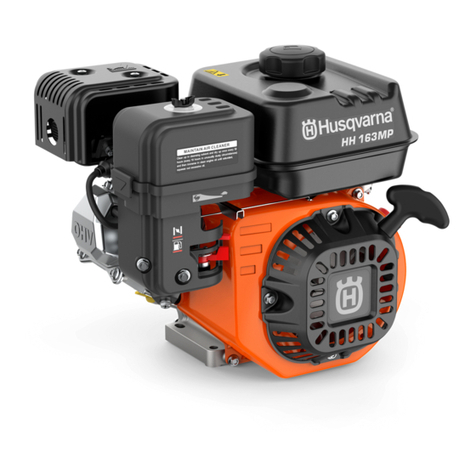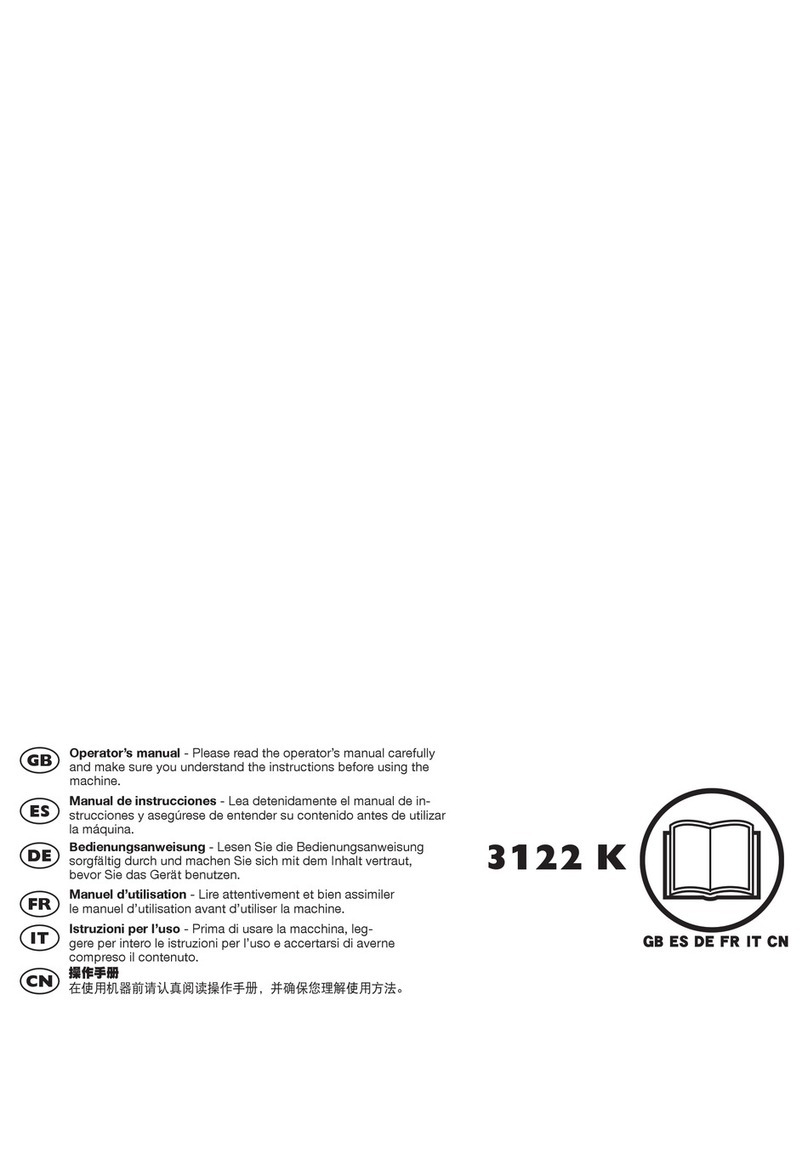
2 Safety
2.1 Safety definitions
Warnings, cautions and notes are used to point out
specially important parts of the manual.
WARNING: Used if there is a risk of injury or
death for the operator or bystanders if the
instructions in the manual are not obeyed.
CAUTION: Used if there is a risk of damage to
the product, other materials or the adjacent area
if the instructions in the manual are not obeyed.
Note: Used to give more information that is necessary in
a given situation.
2.2 General safety instructions
WARNING: Read the warning instructions that
follow before you use the product.
The service center that repairs the product must have
safety devices that obey local regulations. Warnings and
cautions are used to point out specially important parts
of the workshop manual.
2.3 Special safety instructions
• Stop the engine, remove the spark plug and let the
engine become cool before maintenance.
• Do not start the product indoors or in areas that do
not have sufficient airflow. The exhaust fumes from
the engine contain carbon monoxide which is an
odorless, poisonous and very dangerous gas.
• Do not start the product near flammable materials.
The exhaust fumes from the engine are hot and can
contain sparks which can start a fire.
• Keep all body parts away from hot surfaces, or high
voltage lead.
• Do not put the product or a fuel container near warm
objects, an open flame, a spark or a pilot light.
2.3.1 Fuel safety
WARNING: Read the warning instructions that
follow before you use the product.
• Fuel is flammable and the fumes are explosive. Be
careful with fuel to prevent injury, fire and explosion.
• Do not breathe in the fuel fumes. The fuel fumes are
poisonous and can cause injury. Make sure that the
airflow is sufficient.
• Do not remove the fuel tank cap or fill the fuel tank
when the engine is on.
• Let the engine become cool before you refuel.
• Do not fill fuel in an indoor area. Not sufficient airflow
can cause injury or death because of asphyxiation or
carbon monoxide.
• Do not smoke near the fuel or the engine.
• Do not put hot objects near the fuel or the engine.
• Do not fill fuel near sparks or flames.
• Before you refuel, open the fuel tank cap slowly and
release the pressure carefully.
• Fuel on your skin can cause injury. If you get fuel on
your skin, use soap and water to remove the fuel.
• If you spill fuel on your clothing, change clothing
immediately.
• Do not fill the fuel tank fully. Heat causes the fuel to
expand. Keep a space at the top of the fuel tank.
• Tighten the fuel tank cap fully. If the fuel tank cap is
not tightened, there is a risk of fire.
• Before you start the product, move the product to a
minimum of 3 m/10 ft from where you refueled.
• Do not start the product if there is fuel or engine oil
on the product. Remove the unwanted fuel and
engine oil and let the product dry before you start
the engine.
• Examine the engine for leaks regularly. If there are
leaks in the fuel system, do not start the engine until
the leaks are repaired.
• Do not use your fingers to examine the engine for
leaks.
• Keep fuel in approved containers only.
• When the product and fuel is in storage, make sure
that fuel and fuel fumes cannot cause damage.
• Drain the fuel in an approved container outdoors and
away from sparks and flames.
2.4 Symbols on the product
WARNING! This product can be
dangerous and cause serious injury or
death to the operator or others. Be careful
and use the product correctly.
Read the operator's manual carefully and
make sure that you understand the
instructions before use.
Stop the engine and remove the ignition
cable before repairs or maintenance.
Fuel.
Oil level.
Risk of fire.
4 - Safety 1425 - 001 - 03.06.2020



































